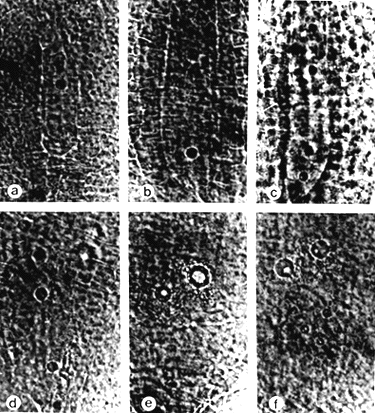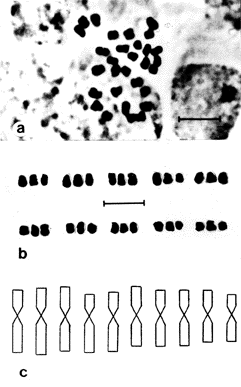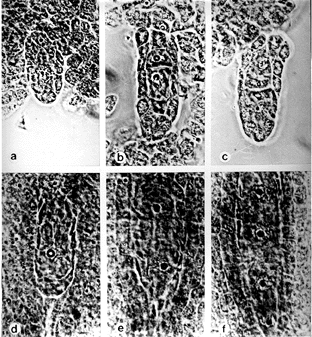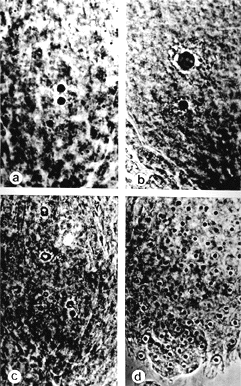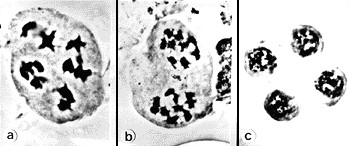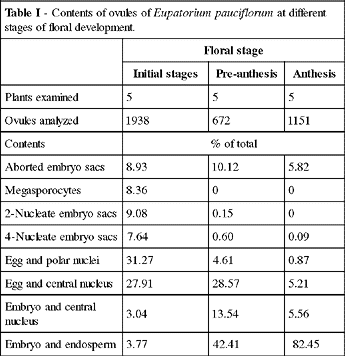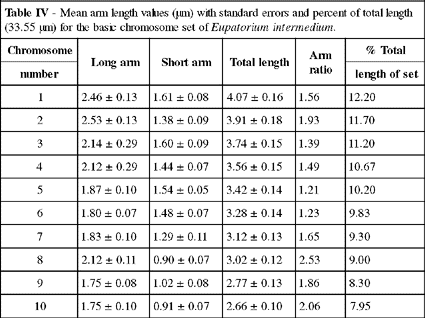The embryology of Eupatorium pauciflorum indicates diplospory with autonomous endosperm development. The embryo sac is of the polygonum type and the polar nuclei mostly fuse before anthesis. The occurrence of precocious embryo and endosperm development in unopened florets, and the total absence of germinated pollen grains on exposed stigmas, as well as the absence of pollen tubes in the ovules, indicate agamospermy to be obligate and embryo and endosperm development autonomous. The study of microsporogenesis revealed the total absence of pollen production in consequence of microsporocyte degeneration before the onset of meiosis, which resulted in absolute male sterility. E. pauciflorum was demonstrated to be an autotriploid with a basic set of 10 chromosomes, each represented three times. Embryological studies showed E. intermedium to undergo reductive meiosis with tetrad formation during megasporogenesis, followed by monosporic embryo sac development of the polygonum type. The polar nuclei fuse before anthesis. The egg cell invariably attains anthesis still undivided, without precocious embryony. Meiosis of microsporogenesis results in the regular formation of 10 bivalents and the subsequent stages of microsporogenesis are normal. Stigmatic loads indicate the regular occurrence of pollination with viable, functional grains. Karyotypic studies revealed a complement of 20 chromosomes separable into 10 pairs. It is concluded that E. pauciflorum, as represented by the material studied, is apomictic while E. intermedium is sexual.

